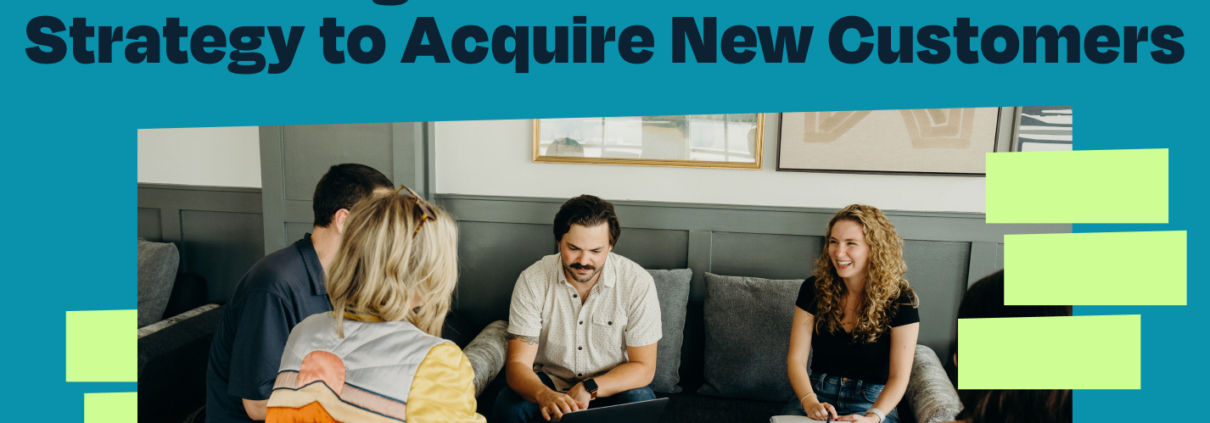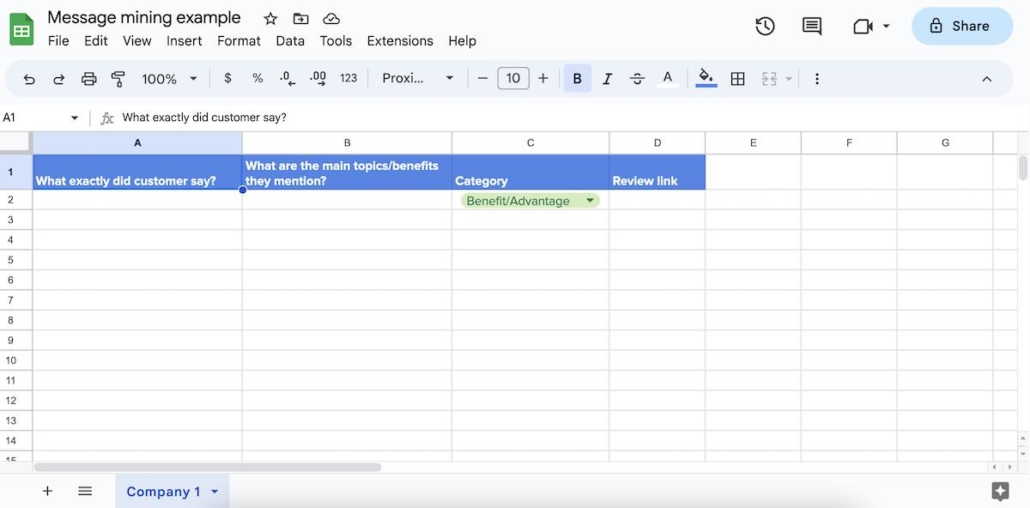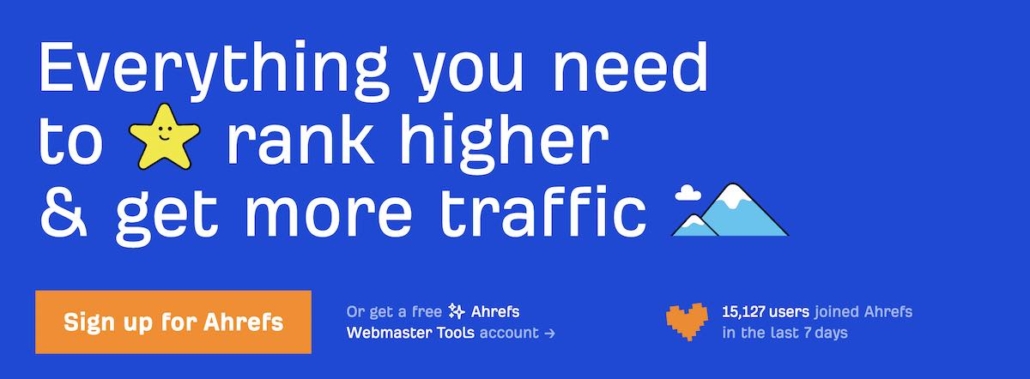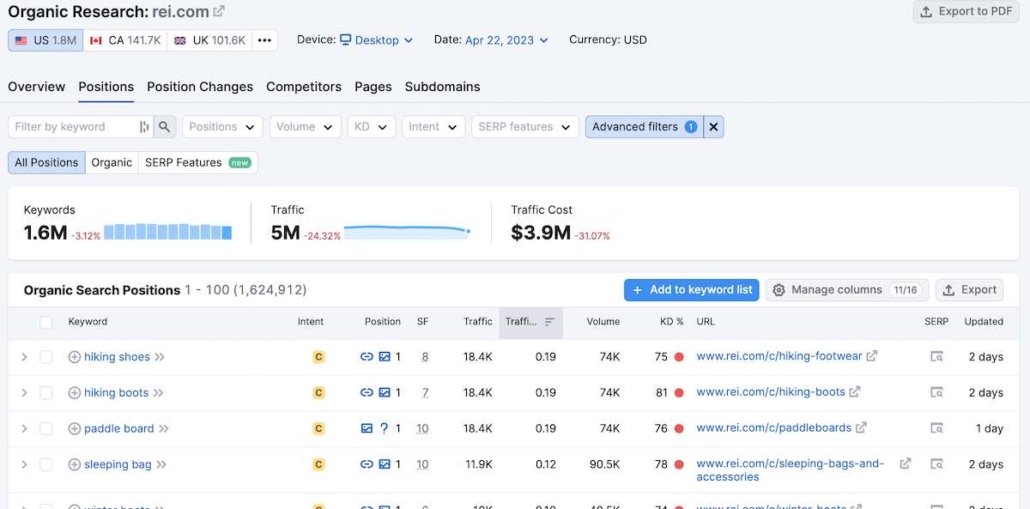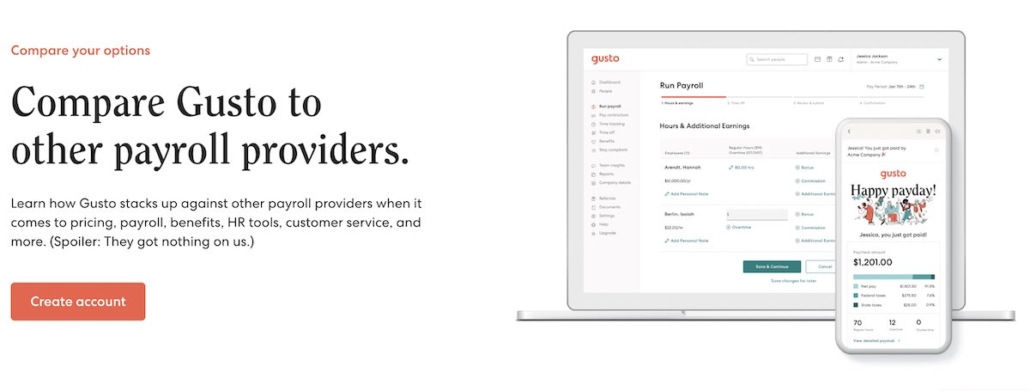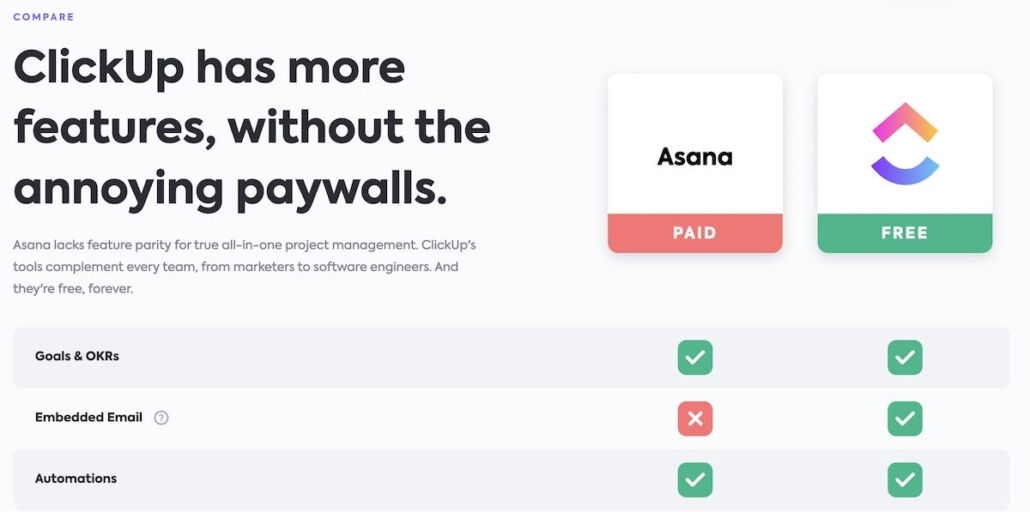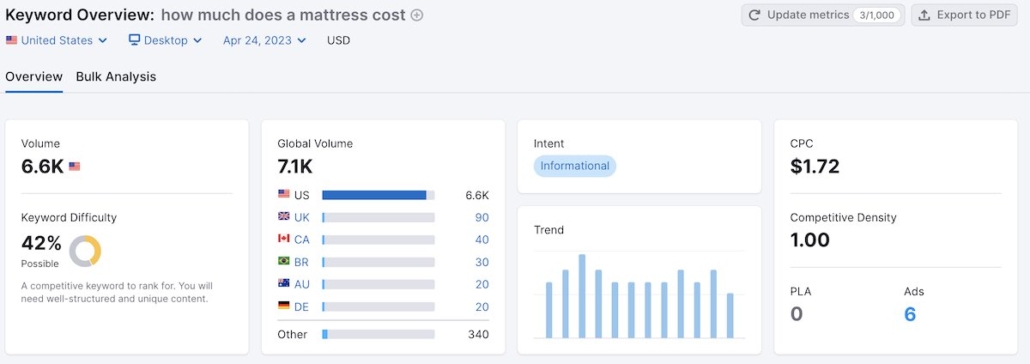Building an Inbound Content Strategy to Acquire Customers
There’s been a lot of talk about an economic downturn—and what that means for marketing budgets. In a recent survey, 75% of global brands said signals of a recession influenced their media budgets for 2023.
Some have already seen their budgets shrink. While others are keeping or increasing their marketing budgets, but taking a much closer look at the return on investment (ROI).
The challenge many marketers face now is how to do more with less money.
Regardless of the state of the economy, there are two main priorities you can focus on to make the most of your marketing dollars:
- Spend smarter on paid media channels – Analyze data on your audience targeting, media channels, creative, and landing page performance to reveal where to put your money and what you need to improve.
- Invest in owned media channels – A strong content strategy drives inbound traffic, leads, conversions, and revenue.
As a growth marketing and content strategy agency, Tuff helps brand partners with paid and owned channels. However, in this article, we’ll focus on owned channels—in particular, your website, content, and search engine optimization (SEO).
We’ll show you how to build a content strategy that helps reduce your paid marketing spend and contributes to customer acquisition, sales, and revenue.
Table of contents
- Why brands need a strong content strategy in 2023
- How to build an acquisition-centered content strategy
- Types of content that drive traffic and conversions
Why brands need a strong content strategy in 2023
When marketing budgets are tight, organic marketing shines. The main reason for this seems obvious—money. Here are the main reasons that investing in content marketing can save you money (and help you make more) in the long run.
1. Get nearly free traffic
SEO is one of the few remaining ways to raise brand awareness and reach potential customers without paying for every click.
Unlike paid channels, you don’t pay for every click and sale that you get. You may pay upfront for the cost to create content. But, once you publish it, you don’t pay anything. If you’re on the first page of Google search results, you could drive hundreds to thousands of visitors from it every month for free.
2. Attract higher-quality inbound leads
Instead of going to leads (outbound marketing), you get them to come to you (inbound marketing). Content is a core component to build an inbound marketing strategy. It helps you attract and convert new visitors and leads. Around 76% of marketers use content to generate leads.
According to Hubspot’s 2022 report, SEO is the second most effective channel for acquiring new customers, behind social media.
When prospects and potential customers find your content organically and reach out to you, you’re more likely to make a sale. For over 60% of marketers, inbound marketing—SEO, blogs, and so on—is their highest quality lead source.
3. Build brand awareness and educate customers
Content Marketing Institute’s (CMIs) 2022 report found that the top five goals marketers achieve through content marketing are:
- Raising brand awareness
- Building trust
- Educating their audience
- Building loyalty with clients and customers
- Generating leads and demand
If you only focus on ads, your brand can feel too transactional. Organic content tends to be more educational.
For example, you might create content that answers a common question or pain point for customers. This type of content provides value without outright asking for anything in return, which builds trust and affinity.
When customers are ready to buy, they might click on an ad or go directly to your website. However, there’s a significant chance they entered the funnel by consuming your content first.
How to build an acquisition-centered content strategy
All the benefits above might sound great, but they also rely on having a strong content strategy. Here’s how to build one like a pro.
1. Outline clear, measurable goals
Every marketing strategy starts with goal-setting, but it’s even more important for content. Goals vary widely and tracking is challenging, so be as clear as possible. To set goals for content marketing, begin by answering these questions:
- How does your marketing goal contribute to your bottom line?
- To be successful, what milestones do you need to reach?
- How will you measure success?
- When do you need to reach your goal?
Some examples of content marketing goals could be to:
- Grow organic website traffic by at least 30% month-over-month (MoM)
- Attract at least 250 organic leads monthly
- Increase organic revenue by 25% in six months
Once you’ve set a clear direction, then you can begin planning your content strategy.
2. Choose content topics based on data
The biggest mistake that I see some brands make when planning content is choosing topics without data.
Instead, they brainstorm themes and generate ideas that are based on assumptions. For example, let’s say a brand sells products and services to women business owners. The brand creates a week’s worth of content around Mother’s Day, including a listicle of Mother’s Day gift ideas.
But, is that really what the audience wants? Simply because your audience is made up of women, it doesn’t mean they’re mothers. Plus, how does that topic relate to the service or solution you provide?
When you base your content strategy on assumptions, at best, you’ll have little to no results. At worst, you could end up offending and losing your audience.
When money is tight, the last thing you want to do is invest in creating content based on assumptions. So, what do you do instead? Use data to inform your content decisions. Here are two types of data you’ll need:
- Audience data – this is where you uncover customer pain points, motivations, hesitations, and more factors that influence buying decisions.
- Keyword data – this is the traditional SEO approach to building a content strategy, by looking at monthly keyword search volume and difficulty to rank.
The best content strategies include both types of research. In the next two steps, we’ll walk you through how to do both—audience and keyword research—to create content strategies that consistently deliver results.
3. Conduct audience research and create personas
Most audience research starts with basic demographic information—age, location, income, education, and so on. You can pull this information from:
- Your current marketing channels (email, social media)
- Google Analytics and other attribution software
- Customer relationship management (CRM) tools
However, this is only a start. True audience research goes beyond demographics and digs into qualitative data including:
- Pain points
- Aspirations (desired outcomes)
- Motivations
- Hesitations
- Perceived value
- Other influences on buying decisions
There are many ways to collect qualitative audience data, but we recommend starting with two—message-mining and customer interviews or surveys.
Message-mining example
Message-mining, also called review-mining, is when you pull feedback from your customer reviews on your website, Google, and sites like Trustpilot or G2. You can compile the reviews into a simple spreadsheet like this one.
The process often reveals:
- Features and benefits your customers love
- Products and services you need to improve
- Your unique value proposition
You can also message-mine competitor reviews. Positive reviews will show you where competitors are winning. Mixed and negative reviews reveal opportunities—they show you where you can beat competitors.
The key is to look for patterns and de-prioritize outliers. What benefits or drawbacks appear the most?
Example customer interview questions
If you’re conducting interviews or surveys, here are sample questions to ask and which data point they reveal:
- Pain points – What problems does this product/service solve for you?
- Aspirations – What do you hope to achieve by using this product/service?
- Motivations – When did you realize you needed this product/service?
- Hesitations – Was there anything about this product/service that you had questions or hesitations about?
- Perceived value – What made you choose this product/service over other competitors?
We could devote an entire blog to audience research, and it still wouldn’t cover everything. If you have limited resources though, this will help you get the most important audience data.
With all this data, you should have a better understanding of your audience to create personas. Audience personas should include demographics as well as qualitative research like pain points.
4. Perform keyword research
How will you get your content in front of your audience? Most people won’t navigate directly to your website and go to your blog, so you need a way to distribute your content.
For most businesses, that means SEO. First, you need to identify which searches your audience is putting in Google, and which you want to show up for—these are your keywords.
To find them, you’ll conduct keyword research with a tool like Ahrefs or Semrush.
At the start of keyword research, it’s okay to have a lot of ideas. Later on, you’ll trim your list and prioritize keywords that will have the most impact on your bottom line. Now that you’ve done audience research, it’s easier to put yourself in your audience’s shoes too.
How to identify keywords
To identify keywords, begin by looking at your:
- Paid keywords – Are there keywords in paid campaigns that you could rank for organically?
- Current rankings – What is your site ranking for currently? Which pieces of content could rank in a higher position if you refresh the content?
- Competitors – What keywords and pieces of content drive organic traffic to your competitors’ sites?
- Audience and intent – Does the person searching this keyword align with your audience? How likely are they to convert to a lead or customer?
Paid keywords you can find in your Google Ads and Analytics account.
Current rankings you can find in Google Search Console. You can also use keyword research tools like Ahrefs and Semrush. If you’re using Ahrefs, you’ll go to Site Explorer and drop in your website URL. Then, click on organic keywords from the left menu.
If you’re using Semrush, you’ll go to Domain Overview, add your website URL, and hit Search.
Then, scroll down to Top Organic Keywords and click View details. For SEO research, you’ll want to exclude branded keywords. This is usually your company name, so it wouldn’t be a keyword that you target with content.
For example, this is what it looks like if you put REI’s website into Semrush and filter out branded terms. Three of the top keywords that drive non-branded traffic to the site are: hiking shoes, paddle board, and sleeping bag.
To find what keywords your competitors are ranking for, follow the same process or do a keyword gap analysis.
For audience and intent, refer back to your audience research. You can also bring in data from sales and customer service teams to identify questions and pain points that arise after your initial research.
Keyword research is only one part of SEO. To rank in search results, you’ll need to structure your content and website intentionally with best practices. You may need technical SEO experts to optimize your website too.
Also, you may create content without SEO. But, that means you’ll need a budget for paid content distribution to get content in front of your target audience.
5. Prioritize topics that relate to your products and services
To make the most of your marketing dollars, you’ll narrow down your content strategy to focus on the most impactful topics.
To do this, start with a map of your customer journey and ask:
- What questions do potential customers have as they learn about your business?
- How can you help answer those questions with content?
Then, narrow down your choices further by asking:
- What pain points does this content address and do I actually have a product or service that helps solve them?
Every topic you choose should originate from data—either keyword or audience data. Now, that doesn’t mean that you can’t leave a small percentage open for experimentation. However, when marketing budgets are small, it’s harder to take those risks.
You’ll also want to select topics that map back to a core product or service and include an internal link to those landing pages.
6. Measure results and adjust
How you measure success will ultimately depend on the goals you set at the start. For SEO content, the typical metrics for success focus on the quantity and quality of organic traffic.
Here’s some examples of ways to measure results for content and SEO.
| Content Marketing and SEO metrics | |
| Clicks (from paid campaigns or other distribution) | Organic traffic |
| Engagement | Bounce rate |
| Number of leads and lead quality | Time on site |
| Revenue growth | Leads |
| ROI – investment cost vs. revenue | Conversions |
SEO tends to take longer to see results than paid because you aren’t paying for a spot at the top of search results. Typically, we start to see results after three to six months.
Now you have a solid plan, here’s how to execute it with high-quality content.
Types of content that drive traffic and conversions
Part of the challenge of building a content strategy is deciding what types of content to create. There are so many options that it can lead to decision paralysis.
We’ve created many types of content for B2C and B2B brands. Here are some types of content we recommend to drive inbound marketing efforts and focus on more traffic and conversions.
1. Comparison content
For this, you create in-depth comparisons of you vs. your competitors. There are two main reasons to create comparison content. First, if you don’t have a lot of brand recognition, you could possibly steal some from your competitors that do.
Second, it’s ideal content that sits at the consideration stage of the marketing funnel. Your prospects and customers are already researching your brand. They can either get the information from a third-party or even your competitors or hear it straight from you.
Many companies from project management tools to bookkeeping software create comparison content. Gusto, for example, has an entire pillar page of comparison content.
Each page features a comparison chart and an overview of the most important differences. ClickUp is another company that leans into comparison content. Comparison pages have easy to understand charts with key features.
2. Articles about pricing
If your company is being mindful of spending, your customers may be too. Be upfront about pricing, because it’s one of the first and most important factors that buyers look for on your website.
You could also drive organic traffic and qualified leads to your website with content around pricing. There may be keywords that follow one of these formats:
- How much does (your product or service) cost?
- (Your product or service) pricing
- (Your product or service) cost
For example, let’s say you search “how much does a mattress cost”. According to Semrush, there are over 6,600 monthly searches, and it’s possible to rank for the term.
It could be a great keyword for a mattress company like Casper or Nectar to rank for organically. (Even though they are paying for paid shopping spots.)
On the other hand, Enterprise ranks in the number one spot for a pricing question: how much does it cost to rent a car? With over 6,600 monthly searches, it likely drives a large chunk of qualified traffic every month for free.
By the time someone searches for pricing, they’re close to buying. As a company, you want to show up when they are ready to buy. Prioritizing pricing content is one way to do that.
3. Video content
Video is the top content type for marketers, followed by blogs and images, according to HubSpot’s latest marketing report.
You can use all those types of content together and repurpose them on channels outside of your website like YouTube.
Combining and repurposing content has two benefits. You save money by stretching how you use your creative assets, and you increase your content effectiveness.
For example, on average, blogs with videos get 70% more organic traffic.
Here are some examples of videos to include in your content strategy:
- Product demos
- Short-form videos
- Tutorials
4. Templates and interactive content
Interactive content gets almost 53% more engagement than traditional static content. Examples of interactive content include:
- Quizzes
- Calculators
- Webinars
- Video
- Templates
- Forms
Another perk that comes with creating interactive content is that you can use it for lead generation. For example, when potential customers take a quiz, they may provide their email along with information about themselves that helps you get to know them.
These are only a few examples of content to get started. Along the way, you may add other types of content that are inspired by customer and audience research.
Investing in a strong content strategy will help you spend smarter. But, remember to base your content decisions on data, like you would with any other marketing campaign.
Interested in working with Tuff on a content strategy for your business? Let’s talk!
